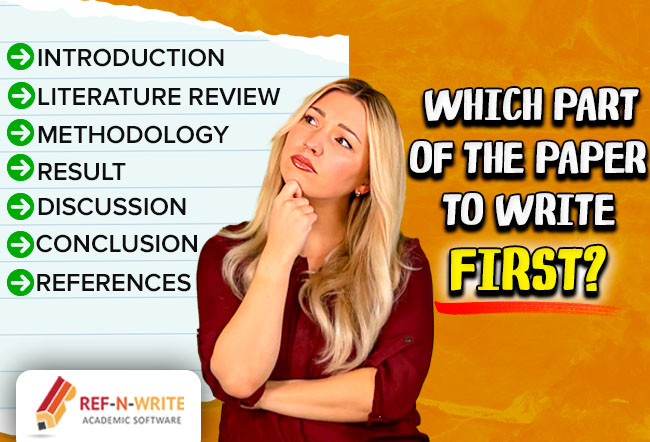Here’s the secret to great scientific writing: it’s not about making bold claims. It’s about the power of hedging, which empowers you to protect your ideas from undue criticism and fosters a spirit of collaboration among researchers. Hedging can boost your credibility in the scientific world.
1. Why and When to Hedge?
Hedging is a technique writers use to express uncertainty or caution. It’s like saying, “I’m fairly confident, but I might not be completely correct.” This approach helps authors anticipate readers’ opposition and present their arguments without sounding overly assertive.
✖ Research results stated definitively. The author sounds overconfident.
The research proves that students use generative AI in more than 90% of their assignments.
✔ Hedged statement of research results. The statement has been toned down a bit.
The research suggests that students probably use generative AI in more than 90% of their assignments.
Using hedging in your statements leaves room for doubt, invites further investigation, and fosters a more nuanced and respectful dialogue with other scholars.
2. Examples of Hedging Techniques
Regarding hedging, there’s a wide array of techniques at your disposal. These can range from simple softening word additions (such as ‘would seem to suggest’) to the use of adjectives or adverbs (‘generally’, ‘possible’) or even the replacement of definitive verbs like ‘prove’ or ‘is’ with ‘suggests’ or ‘may show’.
Tip: Choose the technique that best suits your writing style and the context of your work.
2.1. Being Modest About Your Findings
Writers employ various strategies to hedge their statements. The techniques ensure cautious statements are made instead of bold, arrogant claims.
| Technique | Examples | In Use |
|---|---|---|
| Modal Verbs | May, might, could, would | Males might have greater muscle strength than females. |
| Adverbs of Frequency | Often, sometimes, generally | People often prefer to wear black instead of red. |
| Quantifiers | Some, many, a few | Some students use AI on many of their assignments. |
Switching from active to passive voice is a common strategy used by experienced academics to soften their claims. Using a passive voice distances the writer from the statement.
✖ First-person active voice – you are making a direct statement and assuming responsibility for your claim
I believe that students use generative AI to write their papers.
✔ Passive voice can be used to distance yourself from the claim
It is believed that students use generative AI to write their papers.
2.2. Toning Down Strong Claims
Strong claims are made with strong verbs like “prove,” “equals,” “establishes,” “confirms,” “verifies,” “demonstrates,” and “certifies.” Let’s look at a comparison of strong claims compared to softened (hedged) claims.
| Strong verb | Softer verb |
|---|---|
| The variable is responsible for… | The variable may be responsible for… |
| These results establish that… | These results would seem to show… |
| This means that x = y… | It seems possible that x = y…. |
| These findings conclusively prove… | These findings appear to show… |
Strong claims are also made with strong adjectives and adverbs. These can cause the author to appear overly certain of results and overstate the work’s importance or uniqueness.
✖ Bold claims – sounding overly assertive
Our novel design is exceptionally well-suited for medical research, as the conclusive findings show.
_ Too Innovative _ Too Important _ Too Certain
✔ Softened claims – you admit that you could be wrong
Our results suggest that our design might be useful for future medical research.
Another way to avoid strong claims is to replace verbs with nouns. Instead of saying, “I conclude,” you can say, “My interpretation of the results suggests.” In the second example, you admit that you could be wrong, and your statement is based on how you interpreted the results.
2.3. Criticizing Others Work
As academics, we often review other authors’ writing to evaluate its quality, limitations, gaps, and validity of findings and conclusions. This criticism is critical to academic writing because it helps advance knowledge by identifying areas that need improvement or further study. Hedging contributes to healthy criticism.
Tip: Always constructively criticize and put another author’s work in a positive light.
| Approach | Description |
|---|---|
| Be Precise | Use hedging when uncertain. Be clear and direct with strong evidence. |
| Be Fair | Constructively criticize to improve the quality of research. Don’t undermine the research. |
| Be Respectful | Acknowledge the contribution of other researchers, even when pointing to the work’s limitations. |
When you need to criticize another researcher’s work, you should follow your criticism with an explanation. You do not want to demean the author’s work.
✖ Criticism that is not constructive
Parker (2016) incorrectly supports their hypothesis that there is a significant relationship between social media and attention span, a hypothesis which has since been disproved.
✔ Constructive criticism with hedging
While Parker’s (2016) study provides valuable insights into the relationship between social media and attention span, it is limited by its small sample size and reliance on self-reported data. A later study by Smith and Jones (2022) relied on a sample size ten times that of Parker’s and suggested a weaker relationship between social media and attention span.
In this case, the criticism is constructive. It acknowledges the study’s contributions while also pointing out specific limitations.
2.4. Leaving Room for Other Interpretations
In addition to constructive criticism, where we point out issues in another researcher’s findings, we can discuss the work through a different interpretation.
✔ Stating that the author’s work is open to other interpretations
Our study concluded that Altman’s (2006) data could be examined through a social identity view, leading us to complementary results.
The use of hedging, criticism, and alternative interpretations shape academic discourse. Hedging promotes a culture of humility and openness, where researchers are aware of their knowledge’s provisional nature.
2.5. Anticipating Possible Objections
Academic researchers and writers continually risk being proven wrong and facing opposition. Hedging involves anticipating potential criticism of our work and using techniques to reduce writing too assertively and confidently. You want to write precisely and honestly but with caution. Let’s look at a bold claim that might draw opposition.
✖ Claim that can result in objections and opposition
Although other researchers have examined how college students use generative AI, this is the first study to examine how they use it in writing assignments.
✔ Improved claim using hedging
Although other researchers have examined how college students use generative AI, to the best of our knowledge, this is the first study to examine how they use it in writing assignments.
As a researcher, you can never be sure that you are the first to study a particular phenomenon or situation, but you can say that you are the first, as far as you know.
3. Risks of Over-Hedging
While hedging is a great technique to protect against the risk of opposition to our research, overusing hedging can be another problem. You should only hedge when you find yourself making bold claims that can be interpreted differently or argued against by the reader. Don’t use hedging immediately following a strong assertion that you intended to be strong. Also, avoid using too many hedging words that the reader will find confusing.
Don’t make a strong assertion followed by a weak statement
✖ The findings clearly demonstrate that males may have greater muscle strength than females.
✔ It is clear that males have greater muscle strength than females.
Avoid using multiple hedging words in the same statement
✖ It might, given this particular scenario, be suggested that it is possible that males may have greater muscle strength than females.
✔ In this particular scenario, males may have greater muscle strength than females.
4. Summary
Hedging in academic writing refers to using language that indicates uncertainty or caution. Hedging is important because it shows that the writer is aware of the complexities and limitations of their research. Readers can sometimes misinterpret hedging as a lack of certainty and may perceive hedged statements as less authoritative, so please be very careful while using hedging language.
If you have any questions, please drop a comment below, and we will answer as soon as possible. We also recommend you to refer to our other blogs on academic writing tools, academic writing resources, academic writing phrases, research paper examples and research paper writing tips which are relevant to the topic discussed in this blog.






